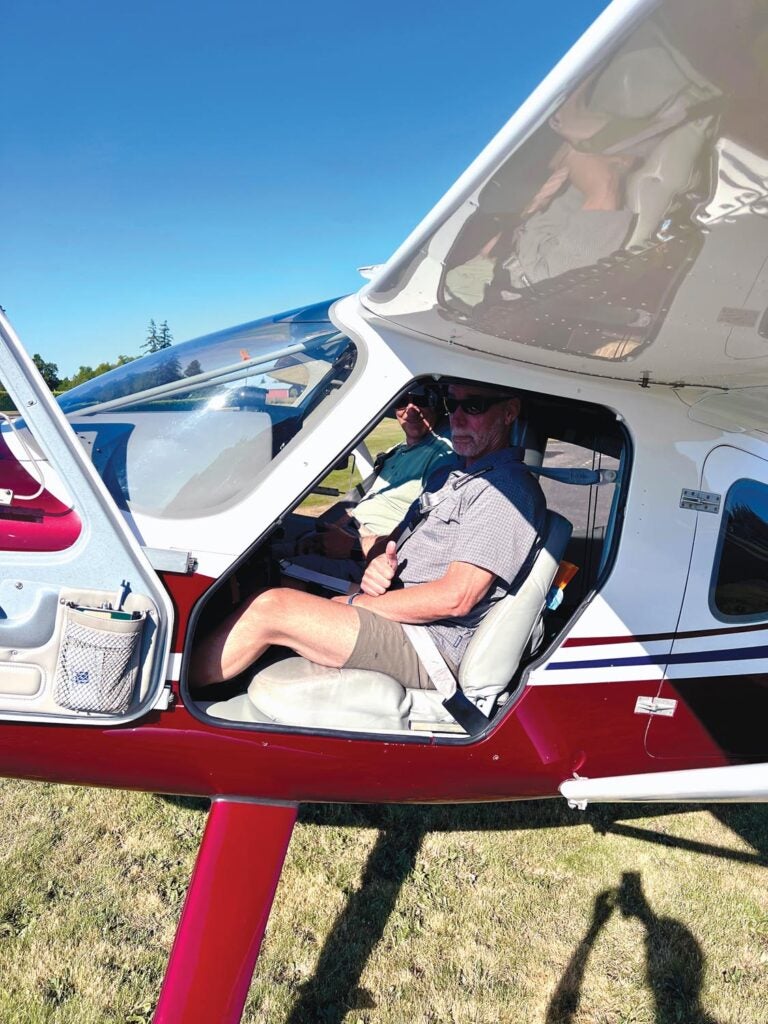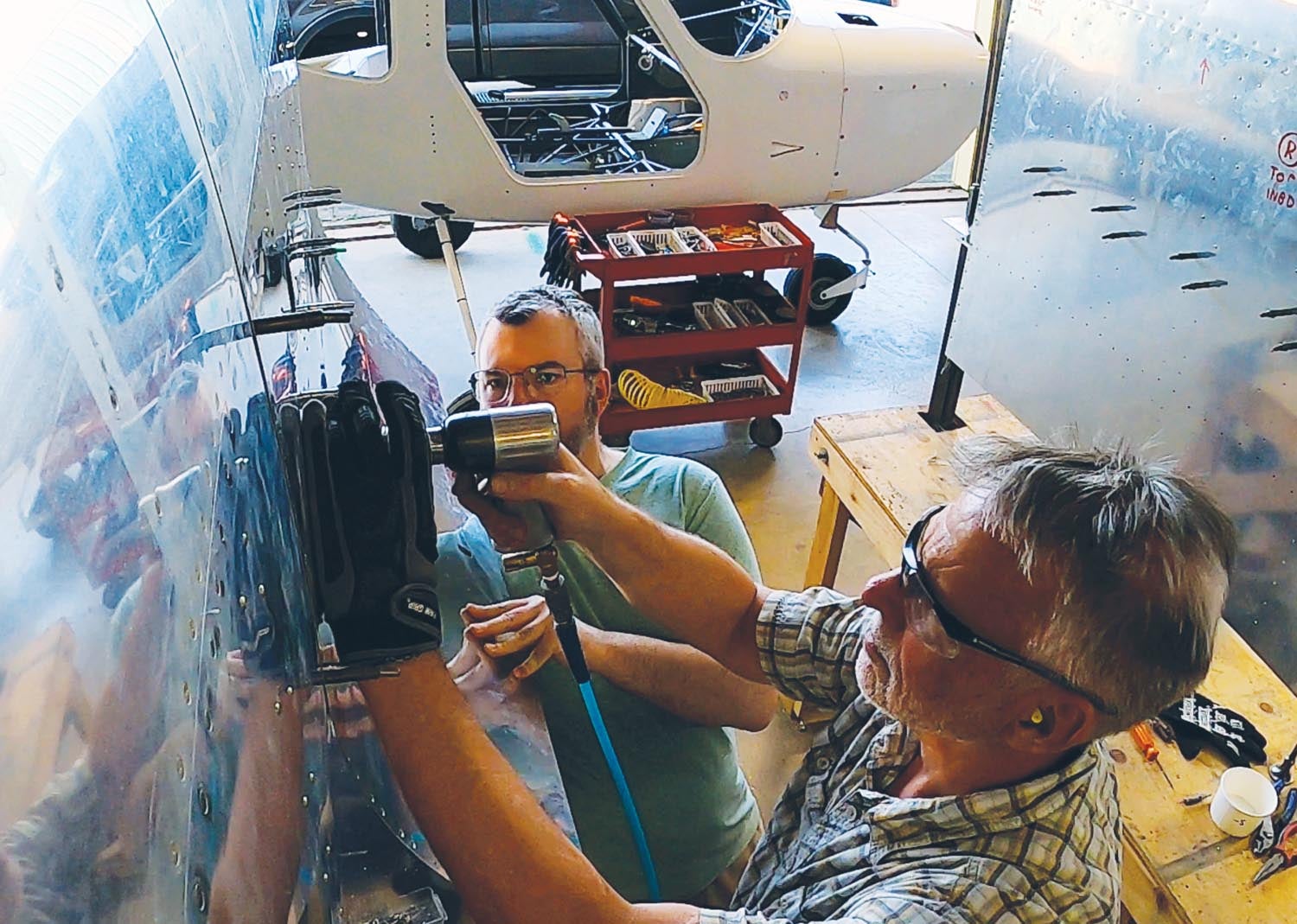
It’s human nature to learn a new skill, work hard to “perfect” it and then settle into a peaceable existence just inside your comfort zone. After our adventurous youth, it’s easy to prefer the familiar over the new, the casual reach over the full-body stretch. I think this is especially true when aviation, in this example, is but part of your world, not its entirety. (I’m grateful every day that my vocation encompasses my avocation.)
A New Skill
I consider my predecessor Paul Dye to be the poster child for the benefits of taking on new challenges. He’s rarely content when there isn’t a new project in the shop, whether that’s the eXenos electric motorglider or a new video series or smaller projects in welding and machining—and who knows what else.
So it was no surprise when he announced that his curiosity about rotary-wing aircraft got the better of him and, after permission from his wife, Louise, he turned a sample of helicopter training into something much more.
Paul is so skilled with metalworking—as you can see in our “Metal Magic” video series—and comfortable with it, you could forgive him for wanting to play in that sandbox forever. It would be a bit like Yo Yo Ma hanging out with the community college orchestra—something, I suspect, he would do purely to preach the beauty and grace of the cello.
Paul hasn’t said as much, but I strongly suspect that his motivation is to keep himself from becoming stale. He’s been relieved of the stresses of NASA and, later, the monthly grind of this magazine. Since then, he’s worked on and received his A&P and is working toward Designated Airworthiness Representative (DAR) authorization. I wouldn’t bet a single copper Lincoln that he’s not at or near the top of the list for the first RV-15 kits to be released into the wild. (And he’ll probably finish it in six months, too. Damn him!)

Borrowing the Idea
While much less ambitious, I consider my participation in our web editor’s GlaStar to follow a similar vein. True, Omar Filipovic did the vast majority of the work, but when it’s time to close the metal wing with conventional, driven rivets, there’s really no way to do it solo. So I grabbed my hearing and eye protection and tried to remember all I could from the short time I riveted the wings on my Sportsman so long ago. Truth is, the Two Weeks to Taxi program I was part of in early 2006 included just enough riveting practice to understand the concept and recognize properly driven rivets from the duds, which I think is critically important for ongoing maintenance. But it doesn’t make you a good riveter; only practice does that.
And, yes, I rewatched Paul’s “Metal Magic” videos as well as a few others and practiced a bit on my own, but the repetition was the education. We fairly sailed through the dome-head 3/32 rivets, especially where the tails are easily seen and bucked, which means you move along quickly and have less time between rivets to think. Omar and I found a rhythm and kept the pace going. Even on the last row—top side of wing, trailing edge spar-to-skin, 1/8-inch rivets—we had an acceptably low reject rate and remarkably little blood on the aluminum. In the end, I had both renewed respect for builders of metal airplanes who rivet thousands of times and a renewed sense of wonder for the process.
And in Flying
I’ll add one more layer to this discussion. Recently, my flight review came due. I have a local flight instructor who is good, very by-the-book and enthusiastic. But he’s had little experience with the GlaStar, so I can kind of BS him about what it does and doesn’t do. (Not that I would, mind you.) So the flight review is mainly about overarching rules and best practices; there’s probably not much he’ll be able to teach me about flying the airplane that I don’t already know.
This year, after chatting with Alan Negrin during a visit up north, he offered that he’d be happy to fly with me for the flight review. This was an offer too good to refuse, in part because Alan has scads of time in the GlaStar and Sportsman—he’s a leader in the transition-training field for the aircraft. Our ground school portion was thorough. I appreciated that he focused on many real-world safety issues and explored areas of judgment rather than have me recite things we know mostly by heart.
But the real treat was doing the air work in Alan’s Sportsman in taildragger configuration with the new taller main gear. It’s a setup I haven’t had the chance to try and, believe it or not, I have been friends with Alan for two decades without flying with him. Our 90 minutes doing air work, practicing landings and emergency procedures and talking airplanes was a total joy. He wrung me out, showed me where I’d become complacent with the airplane (we all do after, oh, about 1200 hours in type) and allowed me to make the kinds of small mistakes you learn from. To be honest, I’d gone into the flight a little apprehensive, knowing Alan’s strong character and vast experience in the type. I came out having refined my edge and renewing my interest in expanding my own horizons. Thanks, Alan.
Glasair Moving to China
Just a couple of weeks before AirVenture began, Glasair Aviation announced that production of the Sportsman kit will be moving from its ancestral home in Arlington, Washington, to Zhenjiang, Jiangsu province, China. According to the company, parts orders placed before the end of July will be fulfilled from the U.S., while those placed afterward will be shipped from China once the facility is up. The timeline for that is two years. Kit sales have been suspended.
I was told that some assets will be maintained in the U.S., including paperwork that would allow the company to issue bills of sale for those builders who may have lost them. And they’re working on developing new molds for consumable composites—wingtips, cowlings, other fairings, but not the main fuselage—to help support airplanes under construction or already flying.
I want to believe this is not the end for the Sportsman design in our country, but I have a hard time seeing the demand return after a two-year (at least) hiatus and am concerned about support going forward. The one bit of good news is that many of the most consumable parts in the design are strictly off the rack and the vendors that supplied some of the design-specific things (like landing gear) are still around. There’s also a vital and active builder/flying community around the design, one that’s going to be more important than ever. But it’s a sad chapter to witness nevertheless.













